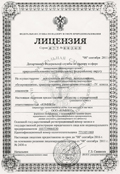Dumping In Europe
 Separate collection of debris is quite common in trying to save their energy and resources from European countries. But in Germany, this system has already gone beyond reasonable limits. Every new morning, German citizens carefully sort their household debris, as if they solve the equation with many unknowns - which of these many categories is to be given a specific bank from underwear or canned meat.
Separate collection of debris is quite common in trying to save their energy and resources from European countries. But in Germany, this system has already gone beyond reasonable limits. Every new morning, German citizens carefully sort their household debris, as if they solve the equation with many unknowns - which of these many categories is to be given a specific bank from underwear or canned meat.
German debris collection was introduced in 1990, initially only the more efficient secondary use of plastics. In order to facilitate the collection of waste, a special yellow barrel was installed in the yard of each house where only a green point special sign could be removed. DSD (recycling of used packages) regularly travelled, collected and recycled plastics. The system was well-functioning, but in 1998 the Government from the Green Coalition and the ADPG wanted to expand the scope of the law on the separation of household debris. This ended with the fact that the common German custodian now has to deal with a dozen urns of different colours for different types of debris that may be located at times 10 to 15 minutes away from home.
German garbage collection services provide free distribution of pamphlets containing information on what kind of garbage can is to be removed, but without prejudice to this, the waste collection system is still too complex and unfriendly for a simple searcher.
So it's not strange that the Germans are in disregard of this system, although they have previously considered it important in terms of environmental protection. Up to 65 per cent of the waste released into yellow barrels is not for processing. In fact, the Germans were just tired of this complex and exhausting process of garbage disposal. In recent years, automatic sorting technology has gone a long way. Optical and magnetic sensors in factories will be perfectly capable of automatic garbage disposal♪ Clearly, the current garbage collection system is simply inadequate to the needs of people.
Related posts:
 In the Volgograd Region Administration, a concession agreement was signed on public utilities, recycling, disposal (storage) of solid household waste. According…
In the Volgograd Region Administration, a concession agreement was signed on public utilities, recycling, disposal (storage) of solid household waste. According… The building is already over, and a bunch of building debris and waste remains lying, rather than seriously ruining the type of capital. As a result, today the required…
The building is already over, and a bunch of building debris and waste remains lying, rather than seriously ruining the type of capital. As a result, today the required… I ve done a lot of franchise monitors, but I ve got the usual bids, a cafe or a store that s already starting to compete with me, I thought I was bored, telling…
I ve done a lot of franchise monitors, but I ve got the usual bids, a cafe or a store that s already starting to compete with me, I thought I was bored, telling… Between 80 per cent and 85 per cent of the debris is exported for burial to special polygons. Every year, the number of solid domestic waste in Russia is increasing…
Between 80 per cent and 85 per cent of the debris is exported for burial to special polygons. Every year, the number of solid domestic waste in Russia is increasing… Is discipline important in investing? Without any doubt it is true! A disciplined investor will never buy securities without serious analysis or pay attention to…
Is discipline important in investing? Without any doubt it is true! A disciplined investor will never buy securities without serious analysis or pay attention to… Structural debris: brick, brisket, concrete, stoves obtained during the dismantling of construction sites are transformed into a secondary building block on GOST…
Structural debris: brick, brisket, concrete, stoves obtained during the dismantling of construction sites are transformed into a secondary building block on GOST… Professional presentation demands more than just content - it requires the right display platform. The Black Easel stands out as a sophisticated solution for artists…
Professional presentation demands more than just content - it requires the right display platform. The Black Easel stands out as a sophisticated solution for artists… The Investor will deposit 200 million roubles in the Siberian garbage processing plant, the Head of the region said that quality recycling of debris should be required…
The Investor will deposit 200 million roubles in the Siberian garbage processing plant, the Head of the region said that quality recycling of debris should be required… The Territorial Waste Management Scheme was held by the Parliamentary Hearings at Medoldum Parliamentary hearings of the Regional Waste Management Scheme were held…
The Territorial Waste Management Scheme was held by the Parliamentary Hearings at Medoldum Parliamentary hearings of the Regional Waste Management Scheme were held… Environmentally sound behaviour is very often consistent with the principles of rationality, servitude, prudential treatment of purchases, by their time, to environmental…
Environmentally sound behaviour is very often consistent with the principles of rationality, servitude, prudential treatment of purchases, by their time, to environmental…